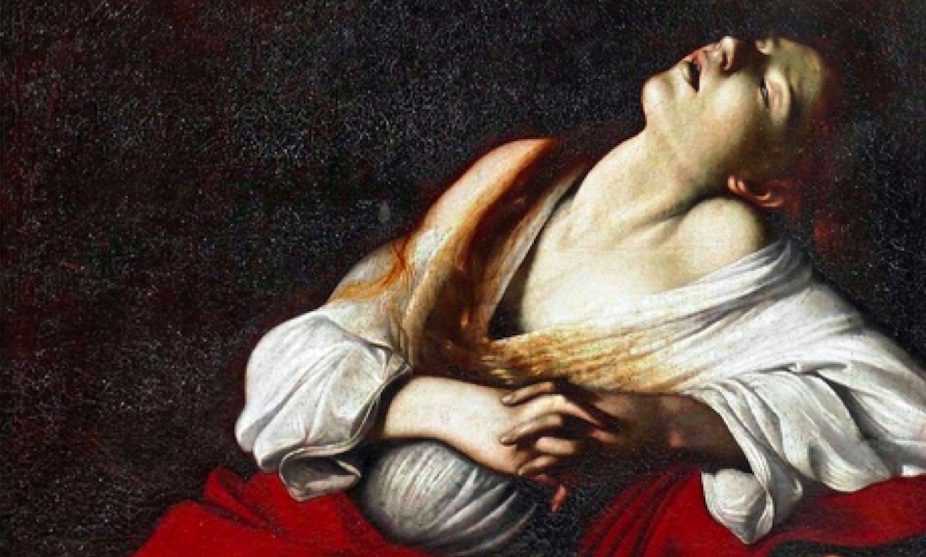The Italian newspaper La Repubblica reported one of the great recent discoveries in the art world last week. It claimed that 90-year-old Mina Gregori, one of the doyennes of Italian art history, had found the famously lost masterpiece of the Magdalene in Ecstasy in a European private collection outside Italy. If it is the real thing, its insurance value would be in excess of £20 million.
The painting is by the radically innovative early Baroque painter Caravaggio. It has previously only been known through several copies, at least one of which had been erroneously claimed as the original. It used to be thought that the picture was painted in 1606 just after Caravaggio had fled from Rome after killing a man in a brawl (or duel). But now the evidence suggests that he painted it a little later, and that he was carrying Magdalene in Ecstasy on a felucca (a traditional sailing boat) in July 1610.
Caravaggio was returning from Naples to Rome in the belief that he was finally to be pardoned for the homicide of 1606. Unfortunately he died of a fever at Porto Ercole on the Tuscan coast on July 18 1610 before returning to Rome. No one knows what happened to the original.
Cardinal knowledge?
What makes the current claim so intriguing is that there is apparently a label on the back of the newly discovered painting in a 17th-century hand. It states that this reclining Magdalene by Caravaggio was to be sent to Chiaia, a posh part of Naples where Caravaggio’s patron Costanza Colonna resided, to be stored there for the benefit of Cardinal Scipione Borghese.

Cardinal Borghese was the immensely powerful nephew of Pope Paul V, who had been involved in the negotiations for Caravaggio’s return. The cardinal was an avid art collector who had sent letters immediately on Caravaggio’s death to the governor of the garrison at Porto Ercole to retrieve any of Caravaggio’s pictures that were on the felucca and send them to Rome. One of these, a sensual young St John the Baptist with a ram, is now in the Borghese gallery in Rome, but the Magdalene seems never to have arrived. It was perhaps retained on the felucca which we now know returned to Naples. Why the picture did not find its way to the cardinal is a moot question.
Perhaps Costanza Colonna wanted to keep it. Perhaps someone decided that its radically erotic, perhaps even sardonic, rendering of a religious ecstasy, entirely consistent with Caravaggio’s provocative rhetoric of the real, was unsuitable for a cardinal –- though the sybaritic Borghese might well have liked it.

Weighing the evidence
It is impossible to judge the authenticity of the painting from the reproduction of only the central part of it in the newspaper, although the full original painting at 103.5cm x 91.5cm is what we would expect from the known replicas. Mina Gregori is 100% convinced that it is the lost original. And if one blows up certain details, such as the head, on a computer screen, one is inclined to think she may be right, both in terms of depth of expression and quality of execution.
The newly discovered painting is very close in style and colour to The Martyrdom of St Ursula (Banca Intesa, Naples), with its pale flesh tones and expressive hands, painted only two months before Caravaggio’s death. The authenticity of the label on the back of the painting will also need to be verified, since rumours are already circulating that it is a forgery.
If this is the real Magdalene in Ecstasy, it is a hugely important discovery. Supporting its claim is the fact that many experts – including me – have never been convinced that the original was among the versions in circulation. While caution about the attribution should be maintained, it is surely now essential to put it to the test by exhibiting the Magdalene publicly.


